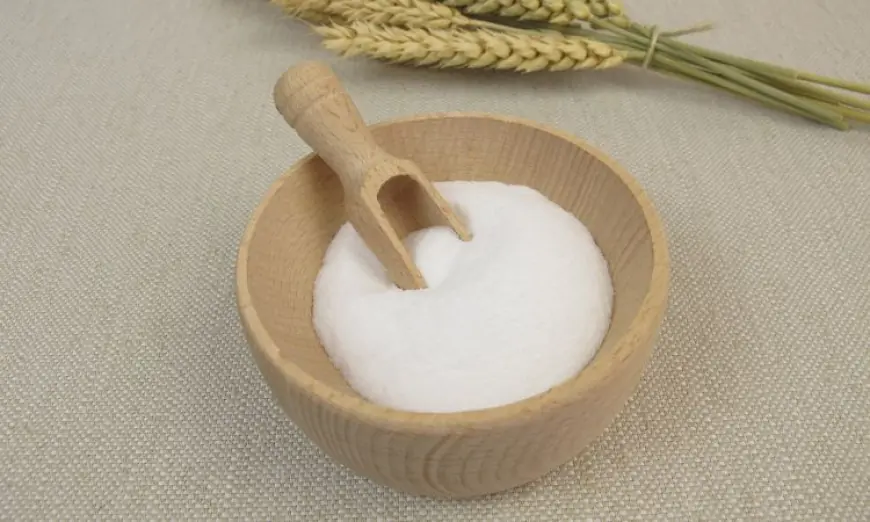Wheat Starch Market Trends, Applications, and Future Outlook (2024-2032)
The global wheat starch market size reached a significant milestone in 2023 with a production volume of 6.52 million tons

The global wheat starch market size reached a significant milestone in 2023 with a production volume of 6.52 million tons. The industry’s versatility, spanning food, industrial, and energy applications, continues to drive demand. Looking ahead, the market is expected to grow at a compound annual growth rate (CAGR) of 1.1% during the 2024-2032 forecast period, reaching an estimated volume of 7.19 million tons by 2032. This steady growth reflects the increasing importance of wheat starch in both traditional and emerging industries.
In this blog, we’ll explore the dynamics of the wheat starch market, its diverse applications, and the opportunities it offers for sustainable growth in the coming years.
Understanding Wheat Starch
Wheat starch, derived from wheat grains through a wet milling process, is a naturally occurring carbohydrate with versatile functional properties. It is characterized by its binding, thickening, and stabilizing capabilities, making it a valuable resource across industries. Its biodegradability also makes it a preferred alternative in applications where environmental sustainability is a concern.
Wheat starch is commonly used in two forms:
Native Starch
Unmodified, ideal for traditional applications like food products and simple industrial uses.
Modified Starch
Chemically or physically altered to enhance specific properties, catering to advanced industrial applications such as adhesives and coatings.
Compared to other starches like corn and potato, wheat starch is uniquely suited for certain food and industrial processes due to its finer texture and unique viscosity profile.
Market Segmentation
By Type
The market is divided into native starch and modified starch, each with distinct applications:
- Native Starch is widely used in food products like bakery goods, sauces, and confectionery.
- Modified Starch has a broader range of industrial applications, including adhesives, textiles, and specialized paper products.
By End Use
The demand for wheat starch is driven by its diverse applications:
Sweeteners
A significant portion of wheat starch is converted into glucose, maltose, and fructose syrups, which are essential in confectionery, beverages, and processed foods.
Fuel
Wheat starch plays a role in bioethanol production, a renewable fuel source gaining traction amid global efforts to reduce carbon emissions.
Paper and Textiles
Its adhesive and binding properties make it an essential component in surface sizing, paper coating, and textile finishing.
Food
In the food industry, wheat starch is used as a thickener, stabilizer, and texturizer in sauces, soups, and desserts. Its clean-label nature aligns with consumer demand for natural ingredients.
Others
Niche applications include pharmaceuticals, where wheat starch serves as a disintegrant in tablets, and cosmetics, where it is used as a natural binding agent.
Regional Analysis
North America
The demand for wheat starch in North America is driven by its use in food applications and the growing bioethanol industry. Technological advancements in production and sustainability initiatives further support market growth.
Europe
Europe remains a leading market, with its focus on clean-label and sustainable ingredients. Regulatory support for bio-based products and advancements in modified starch technology bolster the market.
Asia-Pacific
The region is experiencing rapid growth due to industrial expansion and increasing demand for processed foods. Countries like China and India are emerging as significant markets for both food-grade and industrial wheat starch.
Latin America
With its growing food and biofuel industries, Latin America is a promising market for wheat starch. The region’s agricultural base also provides a steady supply of raw materials.
Middle East and Africa
The market in this region is expanding gradually, driven by rising demand in the food and textile industries.
Market Dynamics
SWOT Analysis
- Strengths: Versatility in applications, cost-effectiveness, and rising consumer preference for natural and biodegradable products.
- Weaknesses: Price sensitivity due to fluctuations in wheat supply and competition from alternative starches.
- Opportunities: Expanding bioethanol production, increasing demand for clean-label ingredients, and innovations in food and industrial applications.
- Threats: Climate change affecting wheat yields, trade restrictions, and the growing popularity of synthetic and plant-based alternatives.
Porter’s Five Forces Analysis
- Supplier Power: Moderate, as wheat is a globally traded commodity with numerous suppliers.
- Buyer Power: High, with industries having access to alternative starches.
- Threat of Substitutes: Significant, given the availability of corn, potato, and tapioca starch.
- Industry Rivalry: Intense competition among global and regional players.
- Threat of New Entrants: Moderate, as established players benefit from economies of scale and advanced technology.
Key Indicators for Demand and Price
Demand for processed foods and biofuels drives the market. Price trends are influenced by wheat supply, global trade dynamics, and production costs.
Competitive Landscape
The wheat starch market is competitive, with leading players focusing on:
- Research and Development: Innovations in modified starch to cater to emerging industrial needs.
- Sustainability Initiatives: Adoption of environmentally friendly practices in production and supply chains.
- Strategic Partnerships: Collaborations to expand market presence and optimize production capabilities.
Small and medium enterprises (SMEs) also play a vital role, catering to niche applications and regional markets.
Future Outlook
The wheat starch market is expected to witness steady growth, driven by its increasing adoption in food and industrial applications. Emerging trends include:
- Clean-Label Ingredients: Consumer demand for natural and minimally processed products will boost the market for native wheat starch.
- Sustainable Practices: Bioethanol production and eco-friendly packaging will offer significant growth opportunities.
- Technological Advancements: Innovations in starch modification processes will expand the scope of applications.












